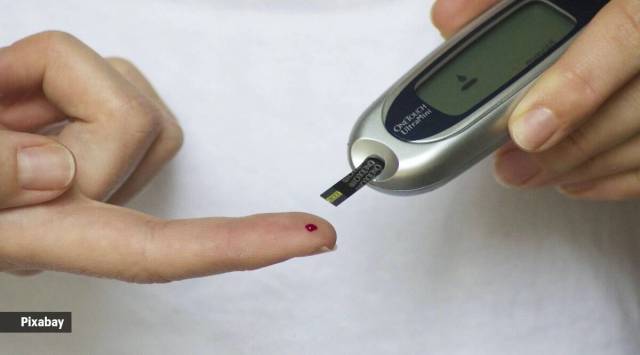In a diabetes-prone country like India, should we be monitoring glucose levels much earlier to ensure that we don’t even get to the prediabetes stage? It’s possible with scientists having developed a new method to pick up early signs of the body failing to control blood glucose levels before it reaches prediabetic levels in patients. By using continuous glucose monitors (CGMs), a US study, which used Indian test cases, found that one in five healthy individuals has the glucose metabolism of a prediabetic. The study is valid because it talks about halting the silent progression of diabetes but experts feel that continuous glucose monitoring in India with a high prevalence of diabetes may be a costly affair. However, they advocate simpler ways to check the body’s response to sugar.
A latest research paper of a comprehensive epidemiological study funded by ICMR and published in The Lancet highlights the burden of diabetes in the country. The new national estimates show that in 2021, there were 101 million Indians living with diabetes and 136 million people with prediabetes.

Why is the new study significant for India?
Published recently in Mayo Clinic Proceedings: Digital Health, researchers from Klick Labs, US, included 384 people from India, who were equipped with a CGM and assessed by a physician over a two-week time period. After applying the sensor to the arm, the device automatically measures the interstitial glucose concentration as frequently as every five minutes, eliminating the need for multiple daily finger pricks. Researchers then applied their mathematical model to the data gathered from the CGM and found that about one in five study participants, considered healthy by medical standards, actually had glucose metabolism similar to those with prediabetes. “For people with diabetes, blood glucose levels can rise and fall like a wild roller-coaster ride with steep drops and peaks,” said Jaycee Kaufman, study lead author and research scientist with Klick Labs. “Intervention on this population could limit the likelihood of progression to full diabetes,” he added.
Understanding prediabetes and ways to track it
Story continues below this ad
“Authors in this study have used CGMs to identify 20 per cent of people among ‘normal and healthy’ individuals whose sugar levels seem to be going up during some time of the day and could actually have some metabolic abnormalities. However, in India, we have been identifying this pre-prediabetic at-risk group by using the oral glucose tolerance test and the one-hour value,” says Dr V Mohan, Chairman, Dr Mohan’s Diabetes Specialities Centre, Chennai. He adds that the authors of this study are suggesting there could be a stage before the prediabetic one and refer to it as impaired glucose homeostasis. “This is not new to us and we have been proposing for some time now that we need to focus on the group with elevated one-hour values in the oral glucose tolerance test. We had termed this group as having early glucose intolerance, a good enough indicator for the future,” he adds.
Why oral glucose tolerance test can be simpler
An oral glucose tolerance test identifies abnormalities in the way the body handles glucose after a meal – often before the fasting blood glucose level becomes normal. If the fasting value is above 126 mg/dl and the two-hour value post-fasting is above 200 mg/l in the oral glucose tolerance test, then it is defined as diabetes. If the fasting values are between 100-125 and two-hour values are in the range of 140-199, then the patient is classified to be in the pre-diabetic stage. Fasting values below 100 and two-hour values of less than 140 are labelled as normal.
According to Dr Mohan, previously this test included collecting five blood samples (fasting value – and at an interval of 30, 60 and 90 minutes respectively). That has been modified and at present only fasting and two-hour values are considered to diagnose prediabetes and diabetes. “We still continue to check three blood samples (fasting, 60 and 90 minutes). The normal level in a healthy individual would mean a fasting value below 100 and a one-hour value that remains below 140. However, if the one-hour value is more than 155 mg, we keep a close watch on the individuals and find that they go on to develop prediabetes. Hence those with elevated one-hour values are followed and asked to modify their lifestyle, reduce carbs and calories, increase their exercise and take up measures to bring down stress levels. If one focusses on this group, then not only will we be able to prevent diabetes but ensure they do not progress to the prediabetic stage. We have been pushing for one-hour values just to identify those who can progress to prediabetes or diabetes,” adds Dr Mohan.
Why early detection is important but the cost of CGMs is a limiting factor
Story continues below this ad
According to WHO, more than 50 per cent of people are unaware of their diabetic status, which leads to health complications if not detected and treated early. Adults with diabetes have a two to three-fold increased risk of heart attacks. However, Dr C S Yajnik, Director and Consultant, Diabetes Unit at KEM Hospital and Research Centre, Pune, says not all can afford CGMs, which approximately cost Rs 5,000. “In India, many prediabetics may be undernourished unlike in the Western world. Hence CGMS may be used to improve their nutrition and sugar levels but cost is the limiting factor,” he adds.
Current diagnostic criteria cannot identify risk of Type 2 diabetes early
The inadequacy of current diagnostic criteria to detect diabetes early could inadvertently be contributing to the disease burden, Dr Mohan and others wrote in The Lancet this February. In their commentary, they have said that physiological fasting and two hour postprandial glucose concentrations are substantially lower than the currently established criteria for defining prediabetes and diabetes, thus leading to an increased risk of the test case progressing to Type 2 diabetes. Shortening the duration of the oral glucose tolerance test to one hour could be more practical and acceptable in a clinical setting. “The one-hour plasma glucose concentration for screening could achieve the objective of maintaining high-risk individuals on the linear part of the trajectory, thereby delaying or preventing progression to Type 2 diabetes,” Dr Mohan and others wrote.

































